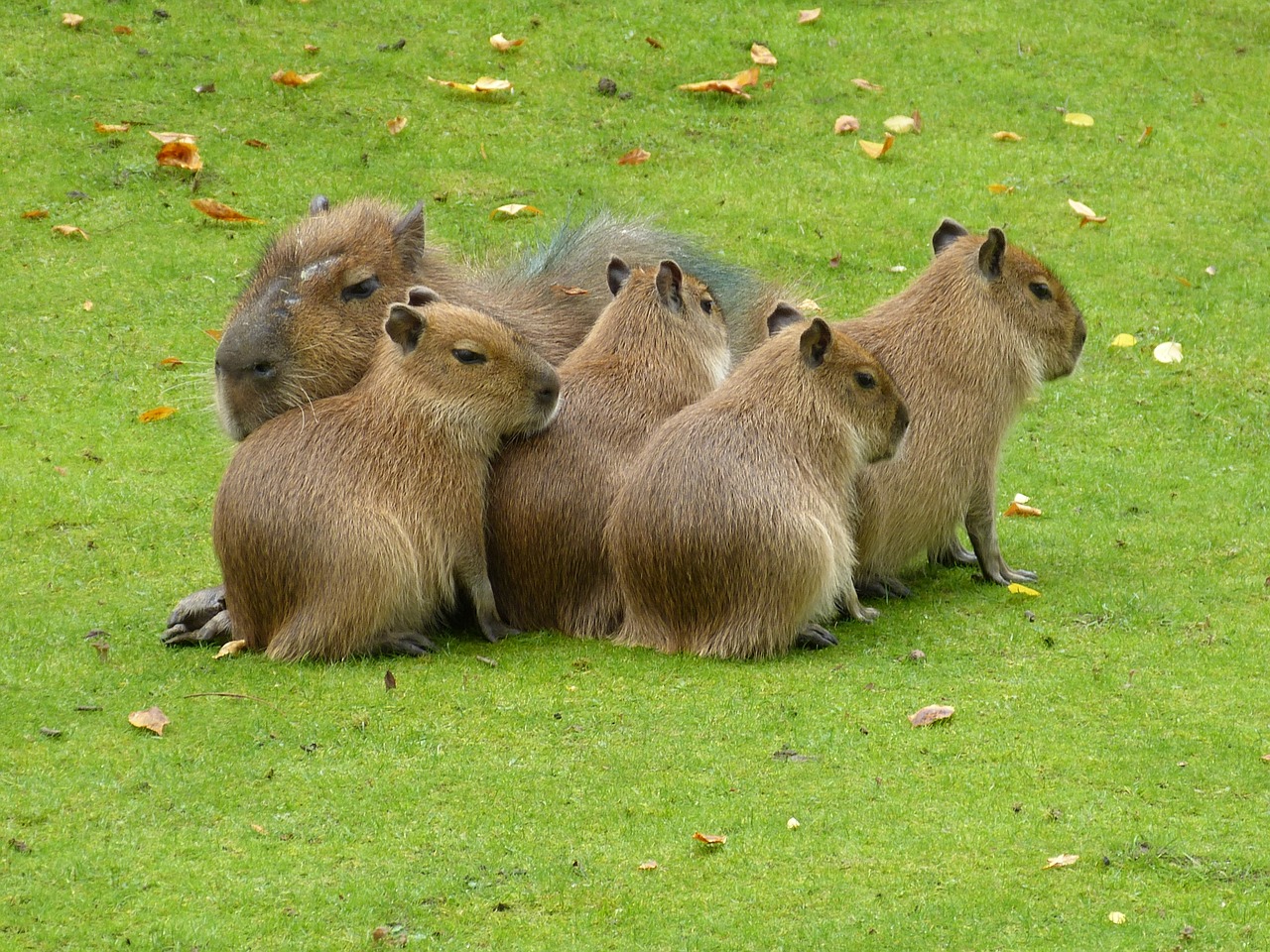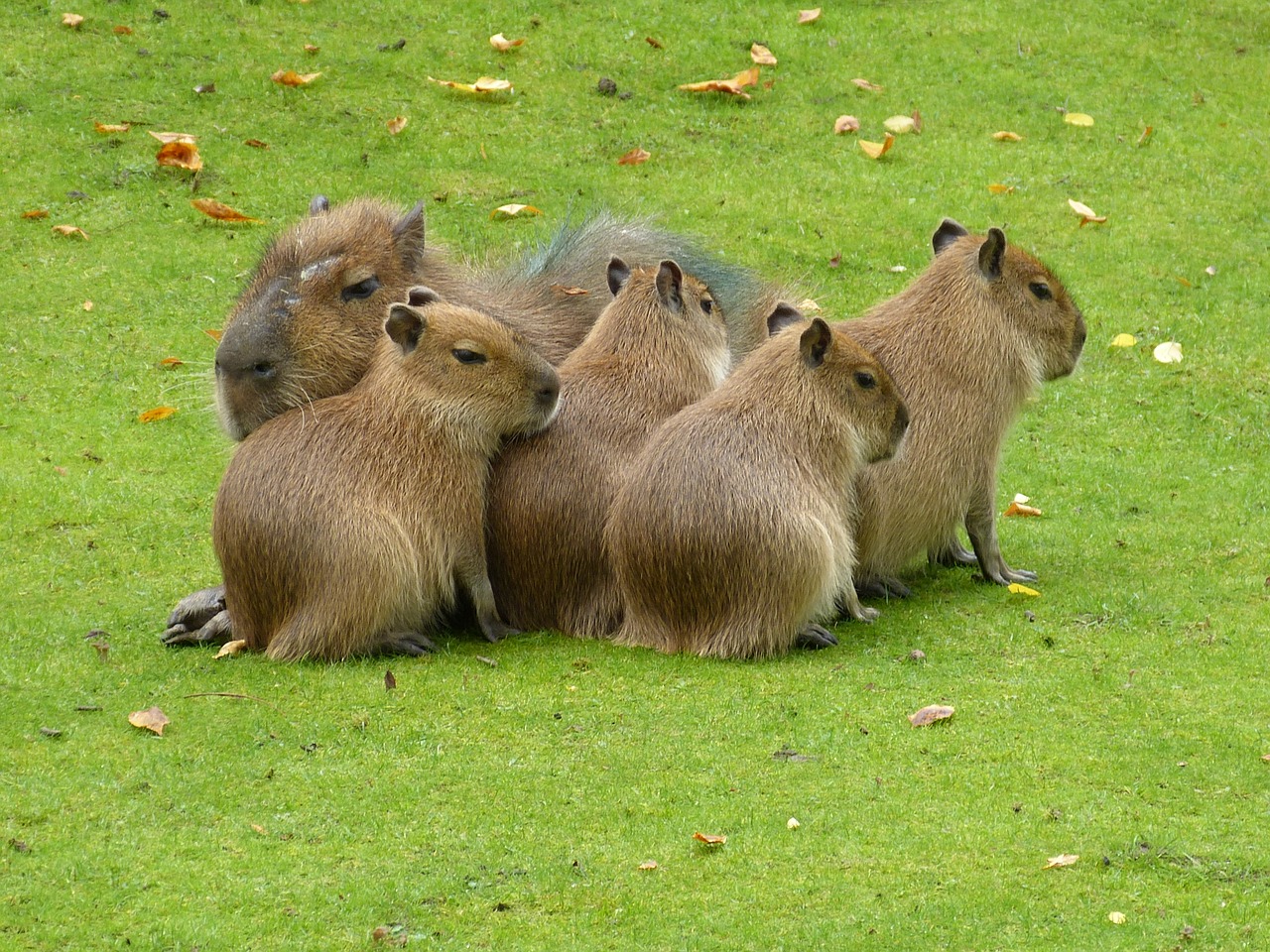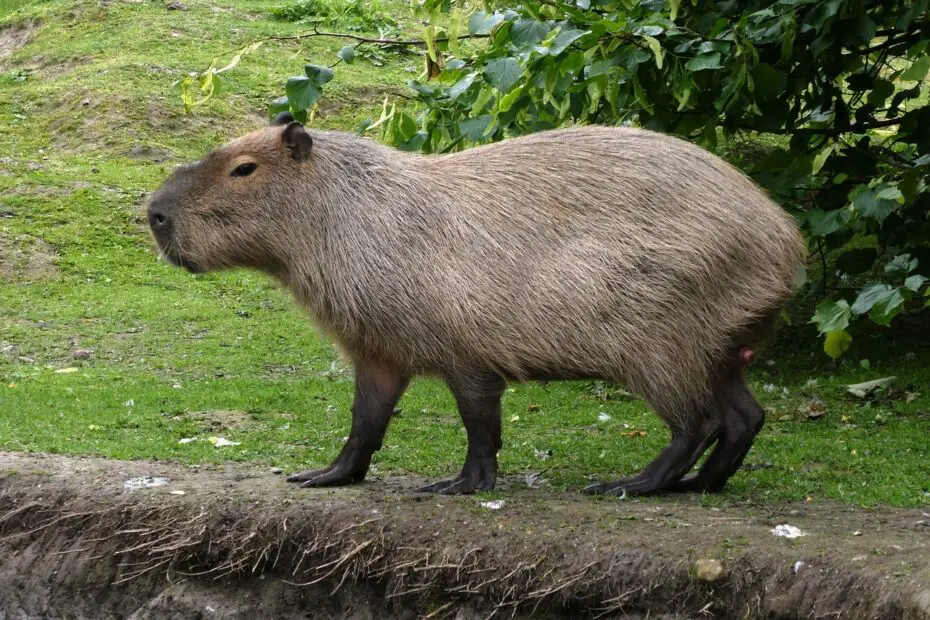Capybaras, with their charming looks and gentle demeanor, have captivated the hearts of many animal lovers. These unique creatures are the largest rodents in the world and hold a prominent place in South American ecosystems. In this article, we’ll explore the fascinating world of capybaras, including their physical characteristics, behavior, their suitability as pets, and the importance of their conservation.
You may also want to read about big crocodiles.
What is a Capybara?
Capybaras (Hydrochoerus hydrochaeris) are semi-aquatic mammals native to South America. These herbivorous creatures have a robust body structure, resembling a mix between a pig and a giant guinea pig. Let’s delve deeper into their physical description, habitat, and distribution.

Physical Description
Capybaras are characterized by their barrel-shaped bodies, short heads, and blunt snouts. They have small ears and eyes positioned on the top of their heads, enabling them to keep a lookout for predators while remaining submerged in water. Adult capybaras typically weigh between 77 and 146 pounds (35-66 kilograms) and can grow up to 2 feet (60 centimeters) tall at the shoulder. Their coarse fur varies in color from reddish-brown to a grayish hue, providing effective camouflage in their natural habitats.
Habitat and Distribution
Capybaras are native to South America, primarily inhabiting the wetlands, marshes, and grassy plains of countries such as Brazil, Venezuela, Colombia, and Argentina. These social animals are highly adaptable and can thrive in a range of environments, including forests and savannas near rivers, lakes, and ponds.
Capybara Behavior and Lifestyle
Capybaras exhibit fascinating social behavior and live in large groups, known as herds, consisting of around 10 to 20 individuals. These herbivores are diurnal, meaning they are most active during the daytime. Let’s explore their social structure, diet, and reproduction patterns.
Social Structure
Capybaras have a complex social structure that revolves around cooperation and hierarchy. The herds are led by a dominant male, who ensures the safety of the group. They communicate through vocalizations, scent marking, and grooming, which helps strengthen social bonds within the herd. These highly social animals often share communal burrows near water bodies, providing protection from predators.
Diet and Feeding Habits
As herbivores, capybaras have a predominantly vegetarian diet. Their menu consists of various plants, grasses, and aquatic vegetation. Capybaras are excellent swimmers, and their semi-aquatic lifestyle enables them to access an abundant food supply near water bodies. Their digestive system is specially adapted to process plant material efficiently.
Reproduction and Offspring
Capybaras engage in a monogamous mating system. Breeding occurs during the rainy season when food resources are plentiful. Female capybaras give birth to litters of around three to eight offspring after a gestation period of approximately 150 days. The young capybaras, called pups, are precocial, meaning they are born fully furred and with their eyes open. They can start grazing alongside their mothers within a few days.

Capybara as Pets
Due to their endearing appearance and gentle temperament, some people consider capybaras as potential pets. However, owning a capybara comes with certain considerations.
Legal Considerations
Before considering a capybara as a pet, it’s crucial to understand the legal restrictions in your area. In many regions, capybaras are classified as exotic animals, and special permits or licenses may be required for ownership.
Care and Maintenance
Capybaras have specific care requirements that need to be met for their well-being. They need access to water bodies for swimming, a large outdoor enclosure, and a diet rich in fresh vegetation. Regular veterinary check-ups are essential to ensure their health and prevent any potential issues.
Capybara Conservation
As their natural habitats face increasing threats, capybara conservation efforts have become crucial. Habitat destruction, hunting, and illegal pet trade pose significant challenges to capybara populations. By raising awareness and supporting conservation initiatives, we can contribute to the long-term survival of these remarkable creatures.
Conclusion
Capybaras are enchanting animals that offer a glimpse into the wonders of the animal kingdom. Their social behavior, unique adaptations, and charming appearance make them a captivating species. While they can be appealing as pets, it’s essential to understand the legalities and responsibilities associated with their care. By appreciating these incredible creatures and actively participating in conservation efforts, we can ensure the preservation of capybaras and their habitats for generations to come.
FAQs
1. Are capybaras dangerous?
Capybaras are generally docile and pose no significant threat to humans. However, as with any wild animal, it’s important to respect their boundaries and avoid approaching them in the wild.
2. Can capybaras be potty trained?
Capybaras have a natural inclination to defecate in water, which can make potty training challenging. It’s advisable to provide appropriate outdoor areas with access to water for their natural behaviors.
3. Are capybaras good with children?
Capybaras can be friendly and tolerant of gentle interactions. However, close supervision is necessary to ensure the safety of both the child and the animal.
4. How long do capybaras live?
In the wild, capybaras have an average lifespan of around 8 to 10 years. However, in captivity, they can live up to 12 years or more with proper care.
5. Can capybaras be kept alone as pets?
Capybaras are highly social animals and thrive in the company of other capybaras. It’s generally recommended to have at least two capybaras to provide them with the social interaction they need.
